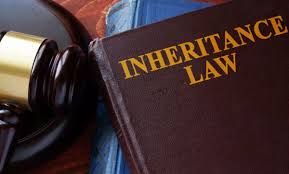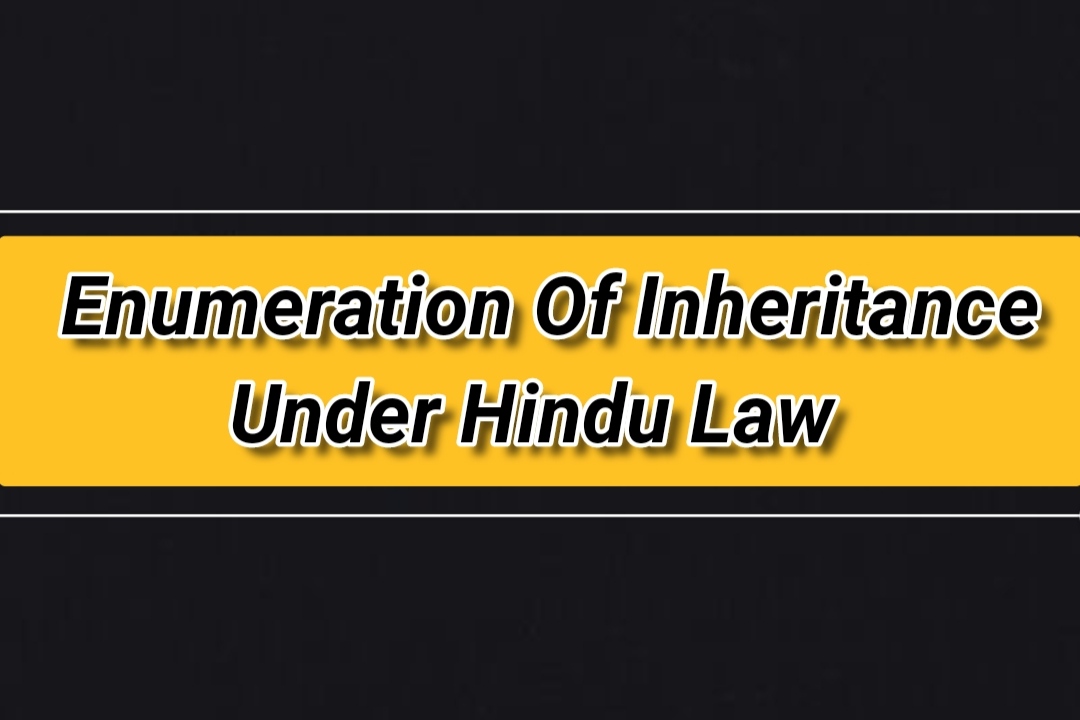This article talks about the laws of succession in cases of both males and females.
Introduction
With the evolution of time, the concept of family has changed over the years, and giving some kind of guarantee to family members has become essential. The Joint Hindu Family is an undivided Hindu family, not just in the estate but also in all personal matters. According to dharma sastra, “it is the duty of the householder to provide that safety and security to children, the old and the infirm and the other such members of the family who cannot be independent.” The senior-most member of the family i.e. the Karta or the head of the family exercises control over all the affairs of the family and provides with all the necessities.
To codify the Joint family, its estate, worship, and decision-making, the Hindu Succession Act, 1956 was enacted by the Parliament of India. The Act lays down a uniform and comprehensive system of succession whereas an attempt has been made to ensure equality inheritance rights between sons and daughters. It applies to all Hindus including Buddhists Jains and Sikhs. This act also protects the concept of devolution of property under the Mitakshara and Dayabhaga schools of law.
Legal Statutes that govern Inheritance

The Hindu Succession Act, 1956
The Hindu Succession Act, 1956 talks about the laws that relate to intestate succession and inheritance in a joint Hindu family. It secures the inheritance of property amongst all the coparceners of the family whilst inheriting the family property. The act applies to all Hindus, Buddhists, Sikhs, or Jain by religion. Hindus married under the Special Marriage Act are excluded from this enactment.
Section 3
In this Act, unless the context otherwise requires,—
(a) “agnate”—one person is said to be an “agnate” of another if the two are related by blood or adoption wholly through males;
(b) “aliyasantana law” means the system of law applicable to persons who, if this Act had not been passed, would have been governed by the Madras Aliyasantana Act, 1949, or by the customary Aliyasantana law with respect to the matter for which provision is made in this Act;
(c) “cognate” — one person is said to be a cognate of another if the two are related by blood or adoption but not wholly through males;
(d) the expression “custom” and “usage” signify any rule which having been continuously and uniformly observed for a long time, has obtained the force of law among Hindus in any local area, tribe, community, group, or family: Provided that the rule is certain and not unreasonable or opposed to public policy, and Provided further that in the case of a rule applicable only to a family it has not been discontinued by the family;
(e) “full blood”, “half blood” and “uterine blood”—
(i) two persons are said to be related to each other by full blood when they are descended from a common ancestor by the same wife, and by half blood when they are descended from a common ancestor but; by different wives;
(ii) two persons are said to be related to each other by uterine blood when they are descended from a common ancestress but by different husbands;
Explanation— In this clause “ancestor” includes the father and “ancestress” includes the mother;
(f) “heir” means any person, male or female, who is entitled to succeed to the property of an intestate under this Act;
(g) “intestate”—a person is deemed to die intestate in respect of property of which he or she has not made a testamentary disposition capable of taking effect;
Section 3 defines and interprets the various relations by which the members of the Joint Hindu Family are connected to each other and this section further helps to decide the mode of inheritance for these relatives.
Section 6
It talks about the devolution of property of intestate succession. Before the amendment in 2005, this section provided that the family property must be divided among the male coparceners of the family. Interest was devolved by way of survivorship. This particular law, excluded females from inheriting the family property by any means. However, after the amendment of Section 6 in 2005, this gender biasness was removed and it was deemed that both male and female members can be coparceners to the family property. Thus, three lines of succession could inherit the property.
Section 8
It deals with the order of priority among classes of heirs by clarifying which class will get the property first. At foremost, the property goes to Class I heirs and then to Class II heirs, after which to agnates and then cognates.
The heirs of Hindu males/females fall under the following categories:
- Class I heirs
- Class II heirs
- Agnates
- Cognates
Class I heirs:
These include-
- Mother
- Widow
- Daughter
- Son
- Widow of a predeceased son
- Son of a predeceased son
- Daughter of a predeceased son
- Widow of a predeceased son of a predeceased son
- Daughter of a predeceased son of a predeceased son
- Son of a predeceased son of a predeceased son
- Daughter of a predeceased daughter
- Son of a predeceased daughter.
With the Amendment of The Hindu Succession Act, 2005, new heirs were added to Class I:
- Son of a predeceased daughter of a predeceased daughter
- Daughter of a predeceased daughter of a predeceased daughter
- Daughter of a predeceased son of a predeceased daughter
- Daughter of a predeceased daughter of a predeceased son.
Shares of Class I heirs:
Section 10 of The Hindu Succession Act-
The primary object of Section 10 deals with the number of shares each person will be entitled to when there are more than one to inherit simultaneously. Therefore, this law elaborates the distribution of the property among the first class of heirs, The rules stated are:
“Rule- The intestate’s widow, or if there are more widow than one, all the widows together shall take one share.
Rule 2- The surviving sons and daughter and the mother of the intestate shall each take one share.
Rule 3- The heirs in the branch of each pre-deceased son or each pre-deceased daughter of the intestate shall take between them one share.
Rule 4- The distribution of the share referred to in Rule 3-
- among the heirs in the branch of the pre-deceased son shall be son made that his widow (or widows together) and the surviving sons and daughters get equal portions, and the branch of his pre-deceased sons gets the same portion.
- among the heirs in the branch of the pre-deceased daughter shall be so made that the surviving sons and daughters get equal portions.”
Example:
If ‘P’ dies leaving behind son ‘S’, widow of a predeceased son ‘S1’, ‘SW’, Predeceased daughter’s son and daughter ‘DS’ and ‘DD’, predeceased son’s Predeceased son’s widow ‘SSW’, his daughter ‘SSD’ and his son ‘SSS’.Distribution is first to be made at a place where branches come into existence.
There are four branches, each will take 1/4th share i.e.
- ‘S’ will take 1/4th. In the branch of ‘S1’, there is only one heir ‘SW’, she representing ‘S1’ will take 1/4th.
- In the branch of the predeceased daughter, there are two heirs, they representing her will take 1/4th and between themselves divide it equally, with result that ‘DS’ will take 1/8th and ‘DD’ will take 1/8th.
- In the branch of predeceased grandson, there are three heirs, representing him they will take 1/4th & among themselves share it equally, with the result that ‘SSW’, ‘SSD’&‘SSS’ each will take 1/12th.
Shares of Class II heirs-
If in cases there are no heirs in Class I, the property automatically goes to heirs in Class II. It is to be noted the rule implicates that an heir in a prior category excludes heirs in the latter category. Moreover, all heirs in one category are given per capita share simultaneously.
Category I
No heirs
Category II
Son’s daughter’s son
Son’s daughter’s daughter
Brother
Sister
Category III –
Daughter’s son’s son
Daughter’s son’s daughter
Daughter’s daughter’s son
Daughter’s daughter’s daughter
Category IV –
Brother’s son
Brother’s daughter
Sister’s son
Sister’s daughter
Category V –
Father’s father
Father’s mother
Category VI –
Father’s widow (stepmother)
Brother’s widow
Category VII –
Father’s brother
b) Father’s sister
Category VIII –
Mother’s father
Mother’s mother
Category IX –
Mother’s brother
Mother’s sister
The rule of share in Class-II heirs is that each will take per capita including widow.
Section 12
It deals with the manner in which succession follows between agnates and cognates. The next heir in line to the property is Agnates and Cognates. The first priority is given to Agnates and then to Cognates. The rules for the distribution of property are the same for both parties.
Agnates:
- agnates who are descendants, for example, son’s son’s son’s son and son’s son’s daughter.
- agnates who are ascendants, for example, father’s father’s father and father’s father’s mother.
- agnates who are collaterals, i.e. who are related to the intestate by degrees of both ascent and descent, for example, father’s brother’s son and father’s brother’s daughter.”
Cognates:
- cognates who are descendants, for example, son’s daughter’s son’s son and daughter’s son’s son’s son.
- cognates who are ascendants, for example, father’s mother’s father and mother’s father’s father.
- cognates who are collaterals, i.e. who are related to the intestate by degrees of both ascent and descent, for example, father’s sister’s son and mother’s brother’s son.
In the case of Agnates and Cognates, relatives that come under a higher subcategory will be prioritized over a lower subcategory which basically implies that descendants will be favored over descendants. Thus, Agnates is someone who traces his relationship through a male heir and Cognates is someone who is in the relationship of a person with another, a female (or more than one female) intervening anywhere in the line, one cognate to another.
Government:
In cases where a Hindu male does not leave behind any heir that fits into the 4 categories as mentioned, then in such circumstances, his whole property lapses to the government. This is called “Escheat”. When government takes his property as an heir, it is liable for all obligations and accountability of the property.
General rules of succession in the case of female Hindus
- The property of a female Hindu dying intestate shall devolve according to the rules set out in Section 16-
- Firstly, upon the sons and daughters (including the children of any pre-deceased son or daughter) and the husband;
- Secondly, upon the heirs of the husband ;
- Thirdly, upon the mother and father;
- Fourthly, upon the heirs of the father; and
- Lastly, upon the heirs of the mother
Notwithstanding anything contained in Sub-Section (1)- (a) Any property inherited by a female Hindu from her father or mother shall devolve, in the absence of any son or daughter of the deceased (including the children of any pre-deceased son or daughter) not upon the other heirs referred to in sub-Section (1) in the order specified therein, but upon the heirs of the father; and (b) Any property inherited by a female Hindu from her husband or from her father-in-law shall devolve, in the absence of any son or daughter of the deceased (including the children of any predeceased son or daughter) not upon the other heirs referred to in sub-Section (1) in the order specified therein, but upon the heirs of the husband.
Section 16 of The Hindu Succession Act, presents a clear and uniform picture of succession in the case of property of a female Hindu who dies intestate. Hence, it allows the distribution of property in the situation of a female Hindu and allows equitable and just division of her estate.
Landmark Cases

Sarojamma v. Neelamma
In the case of Sarojamma v. Neelamma[1], the High Court of Karnataka asserted that “it should not make a difference if a property is a self-acquired property or a Joint Family Property and once the child is conferred the status of a legitimate child as already conferred under Section 16(1) and Section 16(2) of the Hindu Marriage Act then such child should have all the right as in par with any other legitimate child born in the marriage. Hence since the children in this present case are conferred the status of a legitimate child, therefore, they should be able to inherit the interest of the parents in the ancestral property.” Therefore, in this case, the court interpreted Section 16 in a liberal manner and passed a decree in favour of children who are born out of a void or invalid marriage.
Arunachalathammal v. Ramachandran
In the case of Arunachalathammal v. Ramachandran, it was contended that the different heirs mentioned in one entry (Class I of Class II) are subdivisions of that particular entry and they do not inherit simultaneously but here again, there is a question of preference i.e. the first subdivision inherits and then in its absence, the later. The question arose because there were, in his case, one brother and five sisters of the intestate and no other heir and the brother contended that in a brother being in subcategory (3) of entry I, was to be preferred over sister who was in subcategory (4) of entry I and thus he was entitled to the full property.
However the same was negated and it was held that “all heirs in an entry inherit simultaneously and there is no preference to an heir in a higher subcategory within an entry to an heir in a lower subcategory in the same entry. Thus we find that the equality is between every individual heir of the intestate and not between the sub-division in any particular entry. In fact, the court went on to say that there were no subdivisions in any entry in Class II. They were just roman numerals representing the heirs in the entry.”
Vineeta Sharma v. Rakesh Sharma
In the case of Vineeta Sharma v. Rakesh Sharma[2], the Supreme Court made a landmark judgment wherein it held that daughters have equal right in the coparcenary property of the Hindu joint family. Thus, this judgment helped in the upliftment of women’s rights and their share in the family property.
Shri. Shahaji Kisan Asme & Ors. v. Shri. Sitaram Kondi Asme & Ors.
In the case of Shri. Shahaji Kisan Asme & Ors. v. Shri. Sitaram Kondi Asme & Ors.[3], it was held that “In view of the provisions of Section 3(1)(j) read with Section 15(1)(a) illegitimate children may inherit the property of their mother and because they are deemed to be related to each other they may succeed to each other also. However, there is no other provision in the Hindu Succession Act under which illegitimate children can succeed to the property of any other person except their mother or themselves.”
Conclusion
The law of inheritance under Hindu law is complex in nature and is arduous to understand. However, the rules that are in place allow the succession of property in an efficacious manner and the smooth functioning of the division of property. Although there is an entire Act that governs the rules of inheritance, the above-mentioned sections are some of the few important laws which have enabled the judges to pass landmark judgments and also pass a significant amendment for the wider purview of this enactment.
It took years for the legislation and judiciary to understand the needs of females in cases of inheritance to the family property, but with the amendment in 2005, the court has been able to successfully broaden its outlook towards women and give preference to them in the line of succession. However, India as a country still lags behind when it comes to giving women their rights in accordance with the law of the country. Hence, the country is far away from achieving equality by passing unbiased laws with reference to gender.
FAQs
What is inheritance under The Hindu Succession Act, 1956?
Property that is inherited by the coparceners based on the fact that they were born in the family of the property holders and they are related by blood and kinship.
What does the amendment of Section 6 of The Hindu Succession Act say?
The Prior law excluded females from inheriting the family property by any means. However, after the amendment of Section 6 in 2005, this gender bias was removed and it was deemed that both male and female members can be coparceners to the family property.
Can one coparcener acquire all the property by inheritance?
One coparcener cannot inherit all the ancestral property under Hindu law. It can be gifted only under certain situations like distress or for pious reasons.
Does a married daughter have the same rights on the property as the son?
According to Hindu law, a married/unmarried daughter would have the same rights over the property as the son would have.
What action is taken in cases where there is no heir to the property?
In situations where there is no heir, the entire property lapses to the government in the form of an “escheat”.
What is the general rule of succession?
The general rule of succession is that succession first goes to lineal descendants i.e. sons, daughters, widows, mothers, etc.
What can lead to disqualification while inheriting property?
Conversion to another religion, committing murder, and widow remarriage can disqualify them from inheriting the family property.
[1] 2005 (5) KarLJ 66
[2] (2020) AIR 3717 (SC)
[3] 2011(1) ALL MR 339
